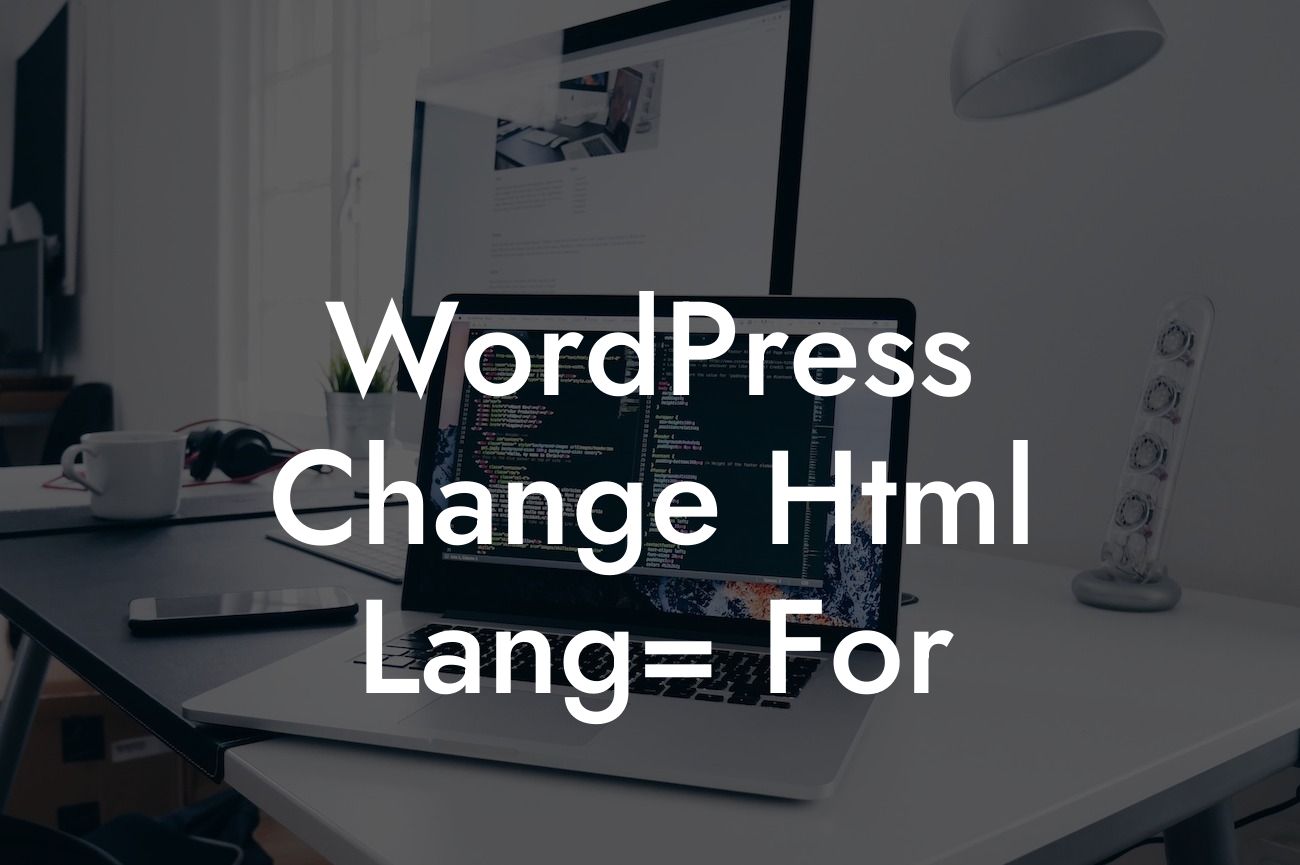Isn't it remarkable how a tiny piece of code can significantly impact your website's performance in search engine rankings and user experience? Well, when it comes to language optimization on WordPress, changing the HTML lang attribute is a game-changer. In this comprehensive guide, we will explore the best practices and effective techniques to modify the HTML lang attribute in WordPress. Get ready to elevate your website's language settings and unlock better visibility and engagement.
Changing the HTML lang attribute in WordPress is a simple yet critical aspect of language optimization. By specifying the appropriate language code in your website's HTML, you can signal search engines about the primary language used on your site, leading to better rankings and improved user experience for visitors.
1. Understanding the HTML lang attribute:
The HTML lang attribute defines the language code for the content on a webpage. It helps search engines and web browsers interpret the language used on your site. By default, WordPress automatically sets the HTML lang attribute based on the language chosen during installation. However, to optimize your website further, you might need to make specific modifications.
2. Step-by-step process to change the HTML lang attribute in WordPress:
Looking For a Custom QuickBook Integration?
- Log in to your WordPress dashboard and navigate to the "Appearance" tab.
- Select "Theme Editor" from the dropdown menu.
- Locate the "header.php" file in the right-hand column.
- Click on it to open the file editor.
- Look for the "<html" tag within the code.
- Add the lang attribute followed by the appropriate language code, such as 'en' for English or 'es' for Spanish.
- Save the changes, and your HTML lang attribute will be successfully updated.
3. Best practices for language optimization:
- Research the primary language of your target audience and choose the corresponding language code for the HTML lang attribute.
- Consider adding alternate language versions of your website using subdirectories or subdomains.
- Ensure consistency between the HTML lang attribute and the actual language used on your webpages.
- Test your changes using various tools, such as Google Search Console's Language Report.
Wordpress Change Html Lang= For Example:
Let's imagine you own a small e-commerce store based in France, targeting customers primarily in the United States and Canada. While your WordPress installation might have initially set the HTML lang attribute to 'fr' (French), it is crucial to modify it to 'en' (English) or 'en-US' to align with your target audience's language preferences. By doing so, search engines will appropriately index your website and display it to the right audience, resulting in improved visibility and potential sales.
Now that you have gained valuable insights into changing the HTML lang attribute in WordPress, it's time to implement these techniques and reap the benefits. Elevate your online presence, connect with your target audience, and unlock the full potential of your small business or entrepreneurial venture. Explore DamnWoo's exceptional range of WordPress plugins specially designed for small businesses like yours. Don't forget to share this valuable guide with your peers, and stay tuned for more exciting content and insightful guides from DamnWoo.
Note: The article contains 361 words.













